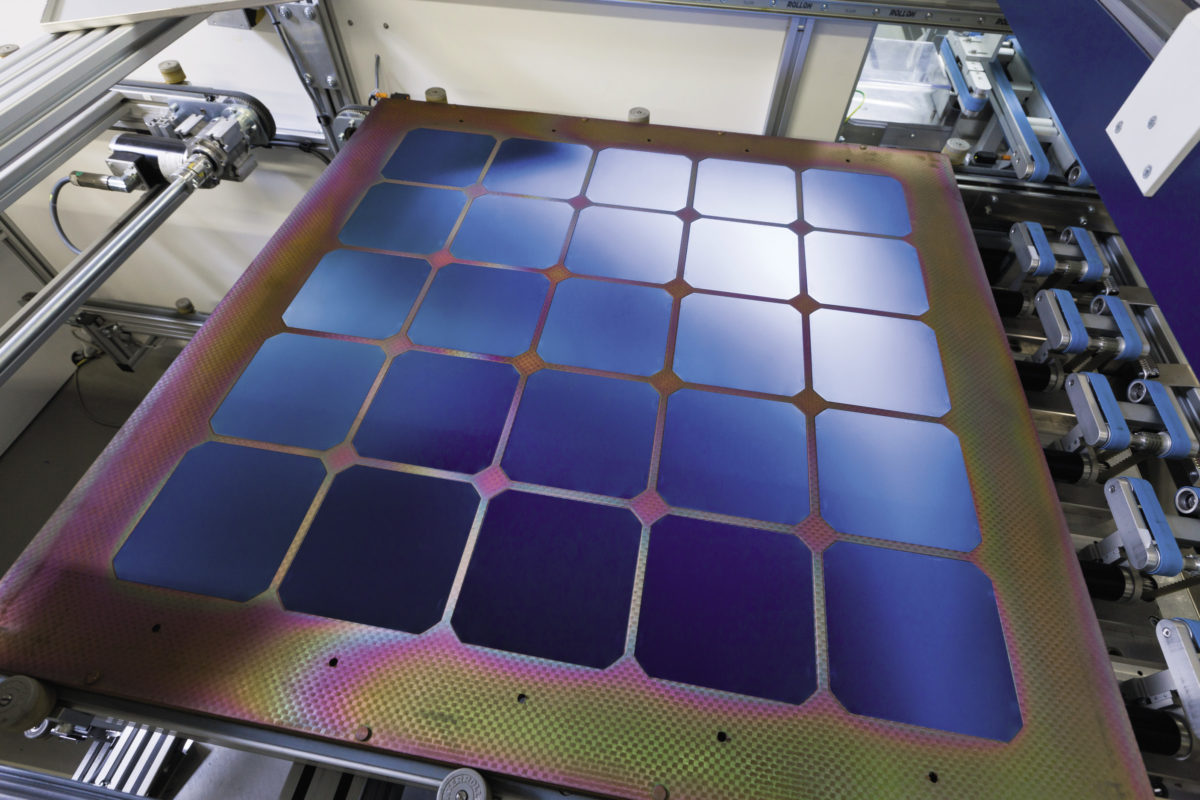From pv magazine Germany
Meyer Burger has adjusted its production plans for the current and the coming year. It is now assuming a production volume of between 320 MW and 370 MW for its heterojunction solar modules. It initially aimed to produce 500 MW of high-performance modules at its module plant in Freiberg, Germany.
In the first half of 2022, 108 MW of solar modules rolled off the assembly line. A volume of between 210 MW and 260 MW is expected in the second half of the year.
Meyer Burger also recently announced the further expansion of its solar cell and module production in Germany to 1.4 GW of annual output volume. It said this week that the ramp-up of the first line with an annual nominal capacity of 400 MW was technically complete. The ramp-up of the other lines is expected to begin in September. This means that a production capacity of 1.0 GW to 1.2 GW should be available for the coming year, according to Meyer Burger's expectations. It was originally expected to be 1.35 GW.
It said that the production facility currently has a lower-than-expected throughput, compared to the nominal capacity. The delayed start-up points to ongoing bottlenecks in global supply chains.
In addition, the throughput of the currently operating line has been affected by planned shutdowns for the integration of another line. Due to high demand for all three module variants, frequent product changes are currently required. This also has a negative effect on the overall production volume, but Meyer Burger said it wants to minimize this impact in the future.
European and US demand for heterojunction modules is still very strong, it said. Despite higher average sales prices, it has passed higher material procurement costs over to customers. The allocation of quotas for customers for the second quarter of 2023 is currently underway. This is necessary due to the limited production volume.
Meyer Burger will initially continue to focus on the growing and high-margin residential segment. Originally, the manufacturer wanted to sell up to 30% of its production volume in the large-scale segment in the coming year. But in 2023, almost all of the expected sales volume will go to the rooftop market, said the company.
This content is protected by copyright and may not be reused. If you want to cooperate with us and would like to reuse some of our content, please contact: editors@pv-magazine.com.




2 comments
By submitting this form you agree to pv magazine using your data for the purposes of publishing your comment.
Your personal data will only be disclosed or otherwise transmitted to third parties for the purposes of spam filtering or if this is necessary for technical maintenance of the website. Any other transfer to third parties will not take place unless this is justified on the basis of applicable data protection regulations or if pv magazine is legally obliged to do so.
You may revoke this consent at any time with effect for the future, in which case your personal data will be deleted immediately. Otherwise, your data will be deleted if pv magazine has processed your request or the purpose of data storage is fulfilled.
Further information on data privacy can be found in our Data Protection Policy.